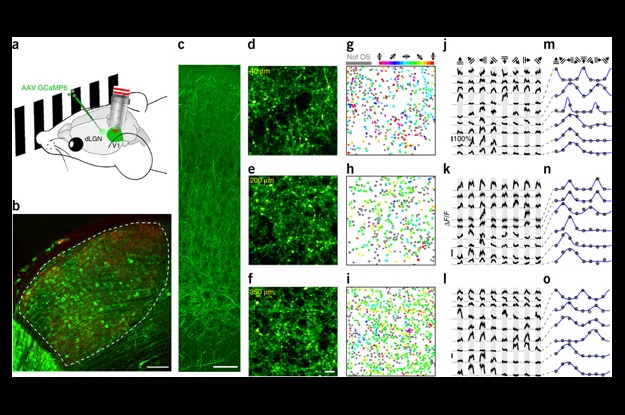
When photoreceptors in the retina of the eye detect light, they relay the information toward the brain's primary visual cortex for image processing. Scientists at the Howard Hughes Medical Institute's Janelia Research Campus who are studying the visual system in mice have now discovered that the input received by the visual cortex is tuned to signal the orientation and direction of movement of a visual stimulus.
The finding is surprising, says Na Ji, the Janelia group leader who led the research, because researchers have long thought that these features were absent from the information that enters the primary visual cortex, and that the orientation and direction of a stimulus must therefore be determined through neuronal computation within this part of the brain. Ji and her colleagues reported their findings as an Advance Online Publication of the journal Nature Neuroscience on December 21, 2015.
The visual system is sensitive to the orientation of the edges within an image, Ji says, explaining that this is why we immediately recognize objects in simple line drawings or cartoons, even if the images lack color or detail. Likewise, the system is sensitive to motion – a moving object attracts our attention even within a crowded scene.
Scientists have long known that there are neurons in the visual cortex whose activity corresponds to specific orientations or directions of movement. Nobel Prize-winning neuroscientists Torsten Wiesel and the late David Hubel first found such cells during the 1950s and 1960s by studying visual processing in cats. But evidence also seemed to suggest that the signals that arrive at the primary visual cortex—relayed from the retina by way of a brain structure called the thalamus—did not explicitly communicate orientation or direction of movement. Instead, the thalamic relay cells appeared to be equally responsive to visual stimuli regardless of these features. “For many years, people have thought that this selectivity is generated inside the cortex itself,” Ji says.
